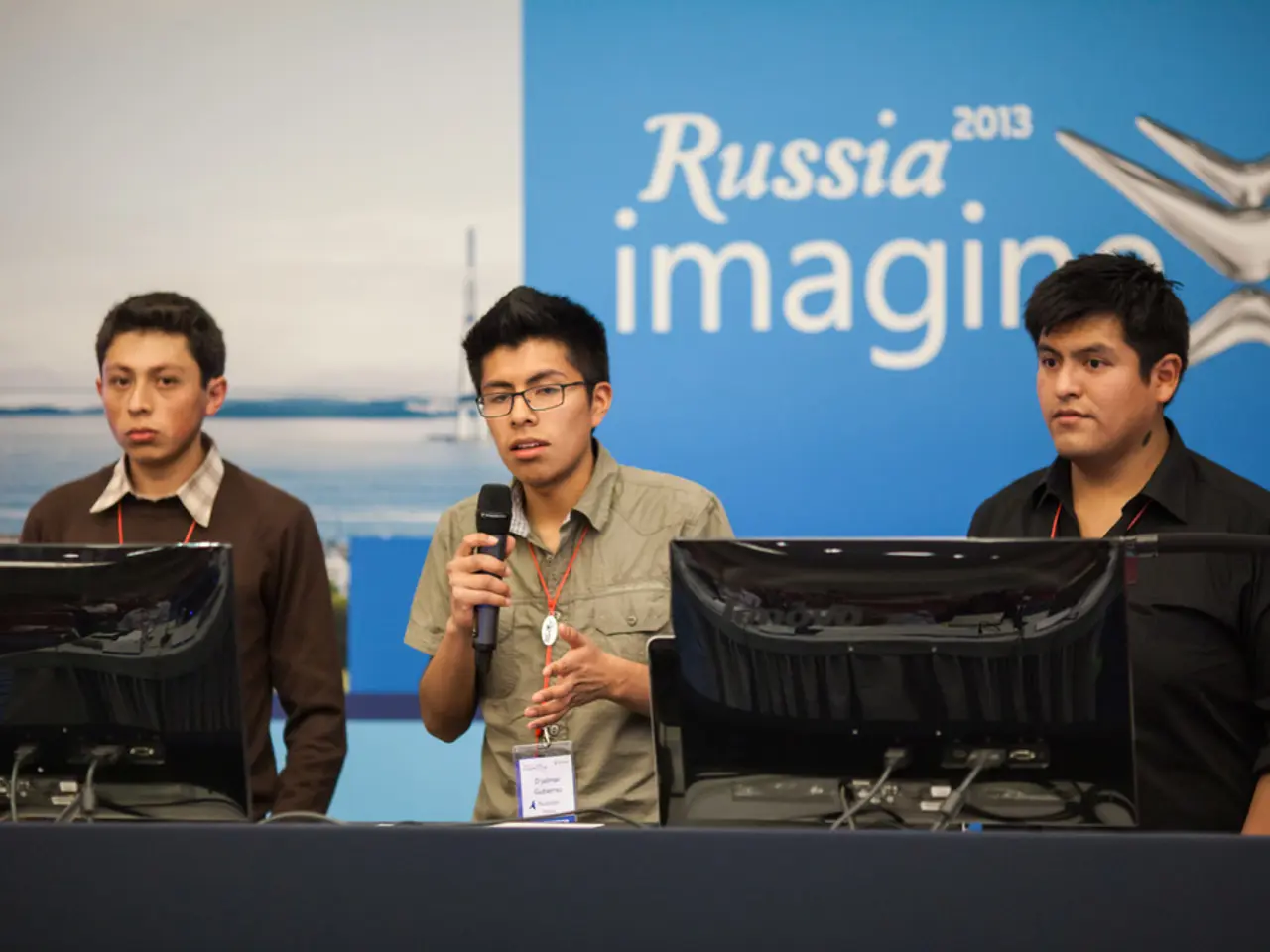Pursuit of Tech Independence in Europe: Examination of Practical Options Amidst International Competitions
In the rapidly evolving digital landscape, the European Union (EU) finds itself playing catch-up with global powerhouses like the United States (US) and China. The EU-initiated global navigation satellite system, Galileo, showcases the continent's technological prowess, but it's not enough to shield it from potential vulnerabilities.
According to the Draghi-Report, if the EU does not act, it risks becoming vulnerable to coercion. This concern is heightened by the fact that the R&D intensity of EU firms is only half that of their US counterparts and 75 percent of that of Chinese firms.
Technological sovereignty, the ability to provide critical technologies for a jurisdiction's welfare, competitiveness, and ability to act, without one-sided structural dependency, is a crucial aspect of this struggle. China commands a comparative advantage in all six key digital technologies and only lacks one in life sciences.
The EU's reliance on foreign countries for R&D financing, which stands between 20 percent and 24 percent, compared to China and Japan's approximately one to two percent, further underscores this dependence.
Despite a rise in annual patent applications from about 500 in 1990 to 8,000 in 2020, the EU was overtaken by Japan and China in ICT patents in the 2000s and 2010s, respectively. The EU lacks a comparative advantage in any of the six key digital technologies.
The Dutch company ASML and the German company Siemens EDA are dominant providers of critical inputs for the design and fabrication of chips, yet the EU lacks technological and production capabilities in batteries and photovoltaic cells for the energy transition.
Cloud computing, AI, semiconductors, cybersecurity, 5G technology, and quantum technologies are among the most frequently cited examples of key technologies where the EU is at a disadvantage and technologically dependent on US and Asian firms.
However, the EU recognises the importance of technological sovereignty and is taking steps to reduce its dependence on global value chains in digital technologies and strategic sectors. The proposed Department for Technological Sovereignty (DTS) is intended to identify technological dependencies in key technologies for policy formulation, considering technological, economic, and political aspects.
Key strategies include institutionalising investment in open source software and infrastructure, strengthening productive and technological capabilities in key industries, developing an integrated tech business offer, prioritising cooperation with trusted international partners, and launching sectoral strategies like the Quantum Europe Strategy.
These strategies aim to build autonomous, secure, and technologically advanced systems and skills that reduce strategic reliance on external suppliers in digital and strategic sectors while supporting European values and regulatory frameworks.
However, efforts such as the Gaia-X project, aimed at creating a federated European cloud infrastructure, have faced challenges, including a lack of funding, no clearly defined mission goal, and obstruction by US tech giants.
As the era of unbridled hyperglobalisation ends, global disruptions have forced the European Union to reassess its traditionally liberal approach to trade, investment, and technology. Economic and technological dependencies are now seen as a significant threat to both the EU's economy and its autonomous policymaking.
With the US strongly opposing the creation of a European navigation system and arguing that the costs would outweigh the benefits, the EU faces an uphill battle in achieving technological sovereignty. Yet, the pursuit of this goal is crucial for the continent's future competitiveness and security.
[1]: Source for EU Sovereign Tech Fund: European Commission [2]: Source for strengthening productive and technological capabilities: European Commission [3]: Source for Tech Team Europe and Global Gateway: European Commission [4]: Source for enhancing supply chain resilience: European Commission [5]: Source for Quantum Europe Strategy: European Commission
- The digital transition in the European Union (EU) is heavily influenced by science and technology, particularly with concerns over technological sovereignty and the EU's struggle to provide critical technologies while avoiding one-sided structural dependency.
- The European Commission has identified the importance of technological sovereignty in education-and-self-development and economic competitiveness, and has initiated strategies to reduce the EU's dependence on global value chains in digital technologies, such as institutionalizing investment in open source software and infrastructure, strengthening productive and technological capabilities in key industries, and launching sectoral strategies like the Quantum Europe Strategy.
- Politics and general news regularly report on the EU's challenges in achieving technological sovereignty and breaking free from technological dependency on global powerhouses, such as the US and China. These challenges include, but are not limited to, contestation over the development of European satellite systems and the rise of economic and technological dependencies as the era of unbridled hyperglobalisation ends.




